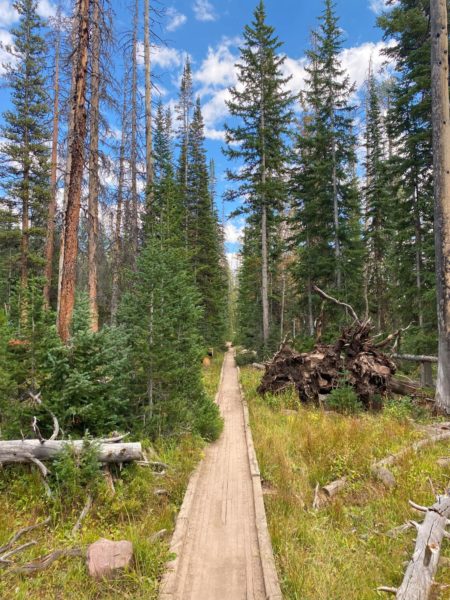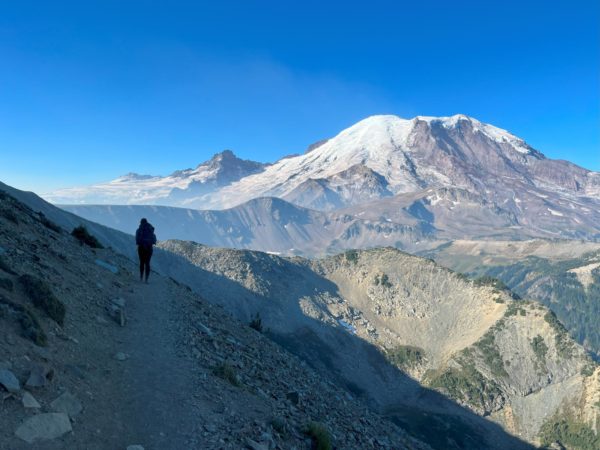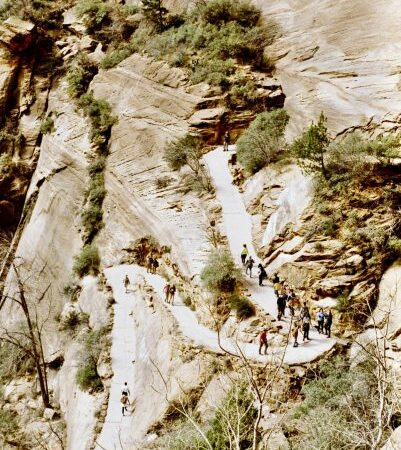The Overlooked Work Behind Trails
Introduction:
Picture yourself hiking up a trail towards the summit of a mountain, a place once etched in your memory. The invigorating scent of pine trees and blooming wildflowers envelops your senses, while the view of the valley below reminds you to never take any of this for granted. However, you already have. The trail that you hiked on this whole time.
The vehicles that take us to the prettiest scenes around Utah are usually in the very back of our mind when we’re using them. It seems that the only time we as hikers and outdoor goers take notice of trails is when they’re bad. The best trails are likely an afterthought.
For me, someone who grew up immersed in the outdoors, the art of trail building seemed familiar. I had dabbled in trail maintenance but had never comprehended the sheer effort required to construct a trail from scratch until recently. This realization sparked the idea for this article – a chance for readers to learn about the meticulous process involved in creating a dirt path through the woods and to gain a deeper appreciation for the labor behind it.
I guess the term “trail” can be somewhat ambiguous. Trails come in diverse forms, from neatly paved roads to cairns separated by considerable distances. Nevertheless, irrespective of their type, every trail demands substantial effort to construct and uphold. The techniques employed in trail construction vary significantly based on the desired trail quality.
History: When were trails invented?
The above question is silly. After all, trails have existed on Earth as long as life has graced its surface. Yet, the bulk of trail building in the United States took place between the 1920s and 30s, when the government sponsored the Civilian Conservation Corps (CCC). This initiative aimed to provide employment in the outdoors for young men who had likely lost their jobs during or leading up to the Great Depression. Although the CCC came to an end in 1942, its influence continues to reverberate through the numerous independent trail building projects thriving today. “Trails Utah” is a local organization dedicated to this very cause.
What to consider when building a trail:
Some people might think that building trails is relatively easy. You figure out where you want to go, and put enough elbow grease into getting there, and voila – trail! However, in reality, this process is seldom so simple. Conservation groups must invest considerable thought, time, and labor into creating a well traversable trail.
It all begins with determining the type of trail required. Will it cater exclusively to hikers, or should it be friendly to bicycles and horses as well? How can you make it accessible without harming the environment?

Next comes the critical step of surveying the land. Natural paths, ridge lines, water drainage, and scenic viewpoints all influence the final design. Given that most trails involve changes in elevation, understanding where the terrain naturally bends becomes crucial. As you may have observed, many trails feature switchbacks and steps in hilly sections. However, crafting these steps from stones or logs is a remarkably labor-intensive endeavor.
Trail Construction: A Herculean Effort
Once the planning is complete, it’s time to roll up your sleeves and get to work! Given that trail construction often spans significant distances, many hands make for lighter work. There’s no such thing as too many volunteers in this process. The initial task involves clearing the brush to define the trail’s width and direction. While this may sound simple, it’s a time-consuming task. Clippers and shovels are used for removing weeds, while saws come in handy for dealing with fallen trees obstructing the path. Carelessness during this phase can cause harm to the surrounding ecosystem, so it’s imperative that those in charge ensure only necessary vegetation is removed.
After enough clearing is complete the trail likely looks like an ankle killing disaster. So the next objectives are evening out the trail, building it up, and reinforcing it. During this phase, teams search for drainage points requiring extra attention and inclines where steps are needed. Logs and rocks, two commonly used materials for these tasks, require substantial effort to move. Timber carriers facilitate the lifting of heavy logs, while canvas nets are employed for transporting bulky rocks. Reinforcing the steps with rebar prevents them from shifting downhill over time.
** It is worth noting that the math behind the seemingly simple objective of making steps is extremely complex, and if you’d like to learn more about said math, you should check out “STEPS” from the California Department of Parks and Recreation.
Trail construction becomes more demanding when bridges and turnpikes (structures to traverse muddy or soggy patches) are factored in. It’s remarkable that places like Utah boast an abundance of trails given the strenuous effort required. As trail crews venture further into the wilderness, transporting necessary materials becomes increasingly challenging. This is why maintenance on a small section of trail can span weeks, and building a 5-mile trail from scratch can take anywhere from 10 weeks to 10 years!
What is left after all that work, is a trail that we get to enjoy. Wisping around scenic overlooks and interesting monuments. Over rivers and behind waterfalls. Up mountains and through forests. So, the next time you stand atop a majestic mountain summit, take a moment to reflect on the dedication and effort that brought you there. And if you find yourself with some spare time, consider joining your local trail maintenance crew to experience firsthand the labor that goes into preserving our natural treasures.

The post The Overlooked Work Behind Trails appeared first on Wasatch Magazine.
Source: https://wasatchmag.com/the-overlooked-work-behind-trails/







